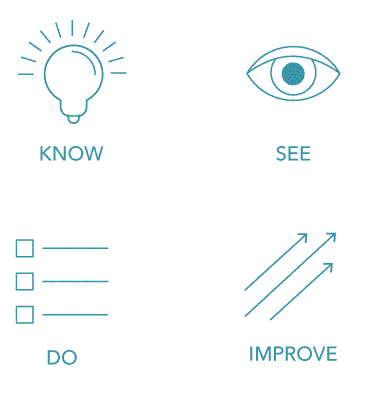Posted: August 27, 2024
Do you ever wonder if we look at how teachers respond in our courses? We do. To be honest, we can’t look at all the responses, but we do periodically audit the responses and we learn from what we see.
Our online courses are asynchronous (which means they can be taken independently at a learner’s own pace). But this does not mean that the learner is passive! Our courses have activities. They provide instructions for strategies to try. Our courses follow the KSDI framework of adult learning—know, see, do, improve.
They include opportunities to practice, to DO. For instance, in "Coaching Through Questions", learners are challenged to be curious about a particular subject (any subject) and ask lots of questions about it. Are you curious about what questions were they asking?
Responses:
- How long do you cook brisket?
- How was Aruba's "natural pool" created?
- How long do ducks live?
- Do I really need hiking books?
- Where did the sand (at the ocean front) come from?
- If there is no air in space, how can the sun burn?
- Is the sky never-ending?
- What could make climbing trees easy?
- What does my dog think about?
- Why do kids have imaginary friends and what purpose do they serve?
- Why do elephants not eat meat?
- How do we still have dinosaur fossils to find?
- How many mushers are allowed to enter the Iditarod?
- When is the best time to divide peonies?
- What makes people's hair different?
- Does it matter if you are right-handed or left-handed when you are learning to play a guitar?
- What kinds of music would kids prefer to dance to?
- Of all the things at school, what gets you most excited?
- What do the kids do at the beginning and end of Ramadan?
- When playing with bubbles, does making a popping sound enhance a child’s experience?
- What are some alternative experiences that could be provided for those children that might not be interested in exploring water?
- If barriers were removed what could happen?
- What is the hardest part of the potty-training process for the child?
- Why do children ask so many questions? What do they really want to know?
- A person described the weather as "another throw-away day." Where did he first hear that expression and what does it mean?
- What would you do if you actually saw a fairy? Would you tell someone or would you keep it to yourself?
- Why does pride stand in our way when letting go of anger?
- What do you like best about the season of life you are in?
This one learner's questions were particularly encouraging. They shared how their son had recently moved to California and "in an effort to be independent, he does not want to share what is happening." Initially, the parent asked, "Have you worked out an income for housing?" They then reflected, "After listening to this course, I can see where that would feel like a challenge or an attack." They then offered this revision, using skills they were practicing from the course, "It's hard to be in a new place. How is Carlsbad different from Layton? From Spring Creek?" They note "This might stimulate conversation revealing things that are going well and things that are challenging for him right now."
We are wowed by these questions and your thinking and curiosity! Each is so different from the other, inspired by very different circumstances, filtered through different brains, and submitted by learners from not just across the state, but across the United States and the globe. Did you know people from 69 countries take professional development through BKC?
You might wonder, what does this have to do with learning, with being an effective teacher? A lot! Great teachers are lifelong learners. They are curious. Great teachers are also very observant of children and are curious about them. They communicate great interest in what interests children. They get down on their level look them in the eye, follow their gestures, and say with their body and their words, "How fascinating! Tell me more."
So when you exercise your curiosity muscles by asking questions, you're building thinking muscles that will serve you well in the classroom—and maybe in the kitchen or Kathmandu.

